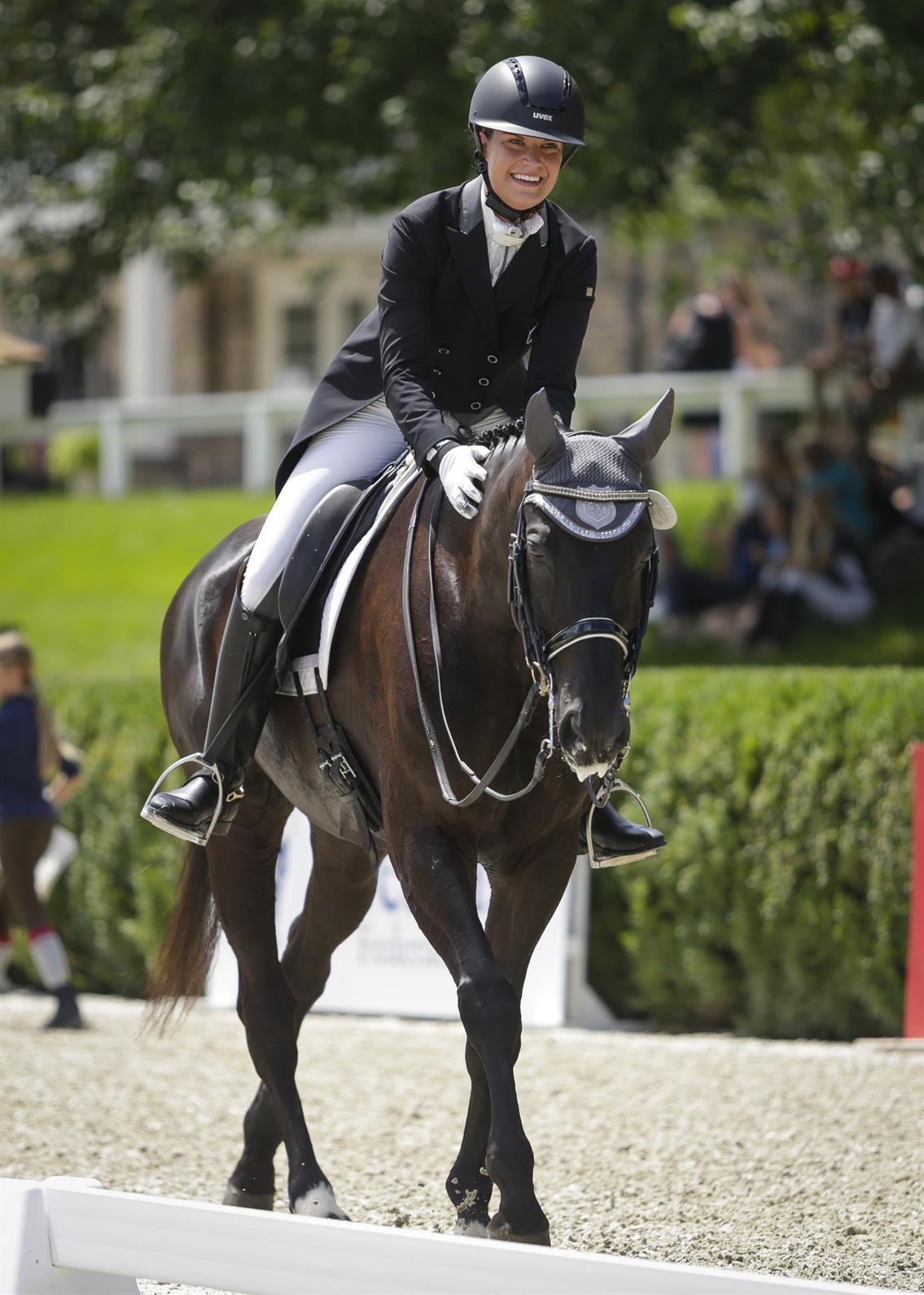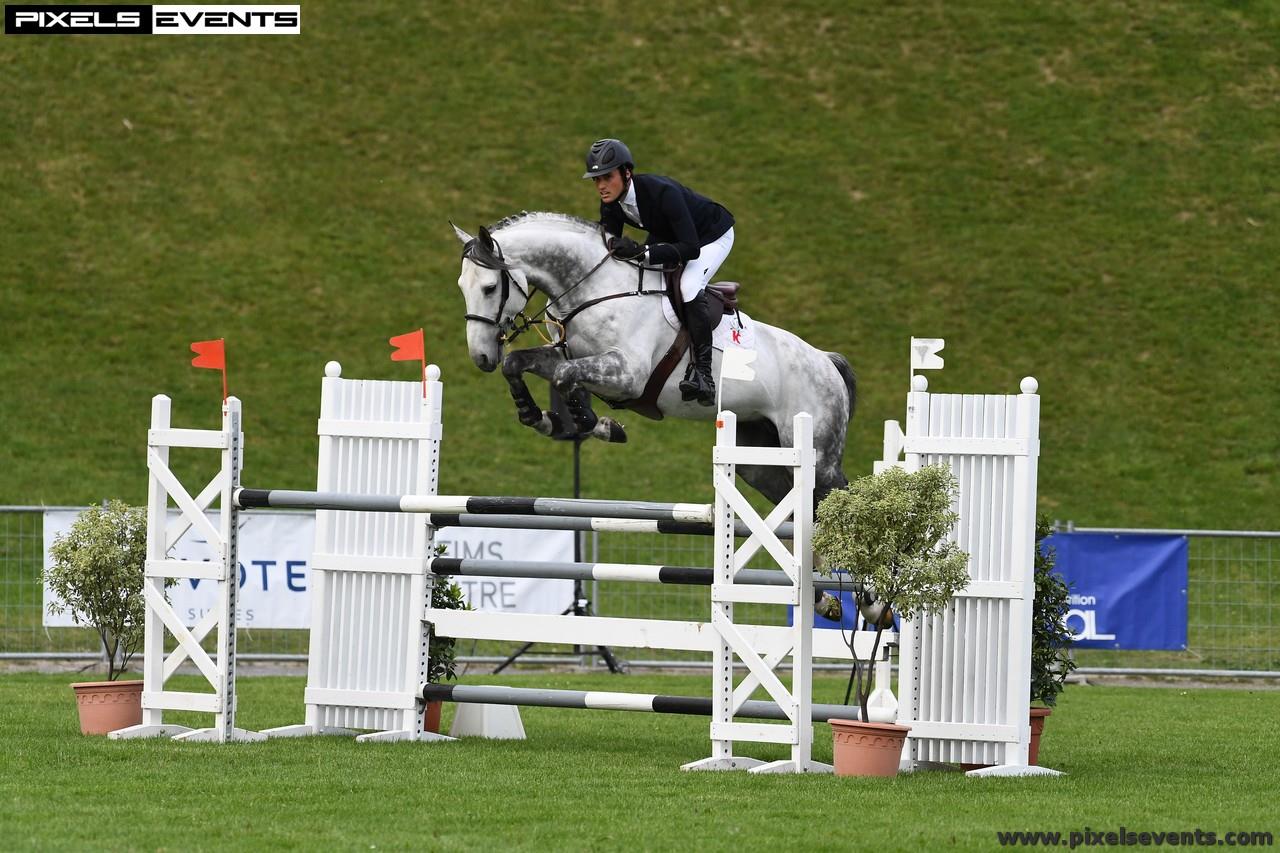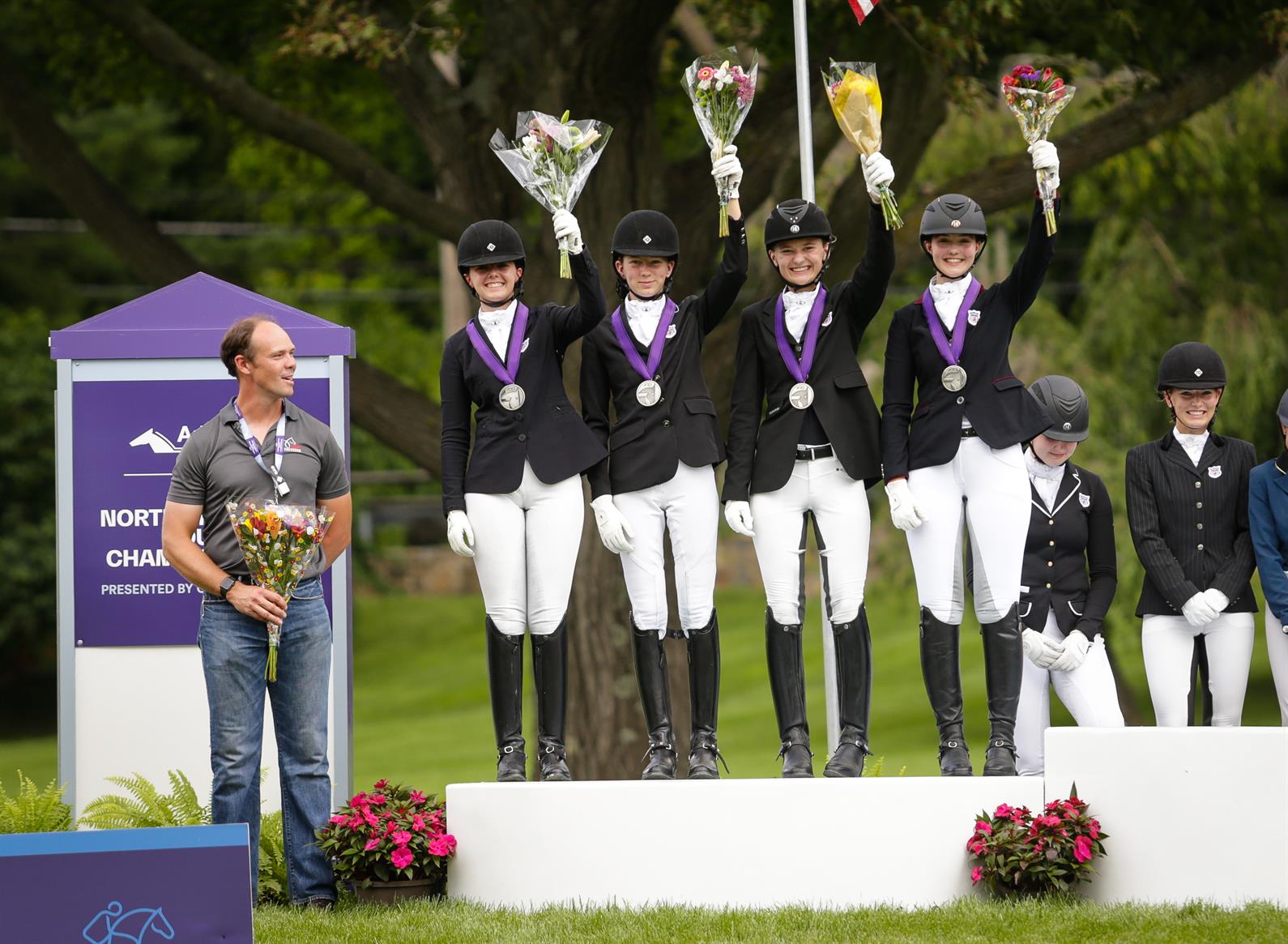The Adequan® FEI North American Youth Championships presented by Gotham North have provided countless learning experiences for young athletes and their supporters over the years. Being on a team with other aspiring individuals and working towards a goal teaches much to everyone involved. Past participants Callie Jones (dressage), Michael Murphy (jumping), and Martin Kuhn (dressage) have reaped the benefits from their NAYC appearances and think others can, too.
Callie Jones
Callie Jones is a top young rider who is a member of the USEF/USDF Discover Dressage Emerging Athlete Program. She competed at the NAYC in 2016 as a Juniors and in 2017 and 2018 as a Young Rider for Region 2. In 2018, Jones won gold in the USDF Young Rider Dressage Individual Championship, bronze in the USDF Young Rider Dressage Freestyle Championship, and also came home with the Dressage Style Award and the Fiona Baan Memorial Trophy as the Young Rider with the highest combined average percentage score from the team, individual, and freestyle performances.
Why is the team experience aspect of NAYC so important? And how is competing for a team different from competing as an individual?
“One of the biggest things about this sport is to have support; you want to have a good support system. Things don’t always go according to plan. Meeting people allows you to have that, and it’s really cool at NAYC when you have friends and teammates watching the rides and cheering you on. They want the best for you, so it’s a really good feeling.

(Taylor Pence/US Equestrian)
“Riding for a team is definitely a different mentality. You really have to think a different way. For example, if you’re the last rider to go on your team and you know your team is sitting in third place, you might ride a little more conservatively just to make sure you don’t have mistakes, whereas if you were competing as an individual, you might ride out of your comfort zone a little bit to get a higher score. You might do that when you’re on a team, too, but you definitely have to strategize a little more, I think. You have to think about what’s going to be best for your team and what you can do to help your team. It’s not just about you and your horse.”
Riders at the NAYC receive a team patch to wear. Was that meaningful for you?
“Oh, yes, for sure. I’d always dreamed of going to NAYC, so to get the patch meant a lot. You feel honored, and, for many people like me, getting to the NAYC is a goal, so getting the patch you feel like, ‘Wow, I’ve made it.’ That’s what it’s all about. It’s a wonderful feeling that you’ve made your first team and that you can look forward to doing that in the coming years.”
What do you feel you’ve gained from your NAYC experiences?
“When I went there as a Junior, I was already dreaming of being a Young Rider there and was watching the Young Riders, so it gives you something to look forward to. I think it really helps you set goals. You get to watch some of the best riders in our country, which teaches you so much. I think I learned a lot by watching, taking notes, and interacting with people, learning about how they got to where they are.
“Last year, I was the individual gold medalist, and with winning I received some media training, which was really cool. We did about an hour-long media training session with Jump Media, and I really enjoyed that. I think it’s something that everyone needs to be aware of and educated about, especially if they want to compete at the top of the sport, so that was really cool.”
What advice do you have for competitors this week, especially those at NAYC for the first time?
“Stay open-minded. It’s great to have goals, but I think if you’re so hard on yourself by thinking that you have to win, having that pressure on yourself really doesn’t help. Enjoy the moment and have fun, because it’s not all about winning—winning is just the icing on the cake. But if you go out there and ride to the best of your ability and you have fun, at the end of the day, it doesn’t matter where you place. As long as you meet your goals, that’s the most important thing.
“It’s so much fun, especially riding on a team. You get to meet so many people! I’ve made so many friends that I’m going to have for a lifetime now.”
Michael Murphy
Michael Murphy is a three-time FEI North American Youth Championships jumping competitor for Zone 4. He has earned top results in the equitation, hunter, and jumper rings, and is now a professional rider and trainer. In May 2019, Murphy was part of the U.S. Show Jumping Development Team at FEI Nations Cup Lisbon CSIO3* in Lisbon, Portugal. He returned to the NAYC this year to coach a student at the championships for the first time.

(Pixels Events)
What did you like about participating in the NAYC?
“It was my first time ever being on a team. I had never really had any experience outside of that. I grew up playing team sports, but you don’t really get to compete for a team in this sport as much unless you are doing something like [the NAYC] or teams abroad. It was a nice steppingstone to feeling the pressure of trying to help other people out as they are helping you.”
Why was it important to attend the NAYC early in your career?
“Early on for me, it was good to learn to ride under some pressure. I had a big equitation career, and you don’t always get to go in with a lot of pressure behind you and [the NAYC] was a nice warm-up for that, even for the indoor circuit that we have for equitation. But also, you don’t get that much experience competing internationally and in FEI classes like this, so even doing this at a young age, you have got a little bit more awareness of how the FEI works and the jog. There is a lot more involved to showing internationally than you would have showing at your regular national horse show.”
What did you learn from the team experience?
“I had ups and downs; I had years where my team kind of carried me through it, and I have had years where I was a staple on the team. Not that [a team] is a safety net, but it is a good feeling when you can help out and contribute. You get a little bit of camaraderie; you get to help your team out and they can help you. Also, just knowing that you are not by yourself and knowing that you have a team behind you because a lot of times you are just competing as an individual. It is nice having a lot of other input. When you have a team, you have other trainers and other grooms and you can learn a lot form the experience, as well, from the people you are competing with and you are associated with due to the team.”
Is there any advice you would give to an athlete aiming for the NAYC?
“I would say come prepared. Know what tests they are going to ask when you get here. Try to cross as many of the boxes off as you can before you get here so there is nothing new you haven’t seen before. You have to get your water certificate, but I would say practice for that. Just be prepared is the best thing, and have your horse in the best physical condition as well.
“It is a nice event. … I think for a young rider wanting to do bigger things as they get older this is a nice step to get comfortable with being on a team.”
Martin Kuhn
Martin Kuhn competed two years at the NAYC, winning team gold in 2002 and team bronze in 2003. He has spent the last eight years as a coach for Region 4. Kuhn served as chef d’equipe in 2018, earning The Albers Award for dedication, enthusiasm, and team spirit.
Why do you like being a part of the NAYC and working with your Region?
“The [NAYC] program is quite fantastic. It brings kids along who are interested in [horses] as a career and [competing] further. That’s certainly the case with Jenna [Upchurch], my student. She works hard and understands what it takes, but this program has [prepared] her. It certainly did the same thing for my wife and I. It’s been fun to return as coaches to help bring along the next generation, just like [others] did for us. The camaraderie [of this event encourages me] to give back. Nothing pleases me more than seeing my students stand on their own feet and do well in competitions like this.”

(Taylor Pence/US Equestrian)
Why is it important to have this early team building experience?
“[The NAYC] brings similarly-minded people together. It is very easy to be insular in [this sport]. It’s great for these young [athletes] to have this interaction with people their own age and interests. When they come together with a bunch of other people that have the same dedication and love of horses, they find out that they are not alone, [they have] similar interests and can have fun together as a team.”
What is one of your most memorable moments from the NAYC?
“Last year, [a lot things did not go our way]. However, through it all, the team pulled together when it really mattered and did well. This is the kind of camaraderie that this event can bring out in people. The capacity for people to lift each other up is pretty impressive. We all love horses, and we want to lift each other up.”
How do you take a group of riders who do not know each other and mold them into a team?
“The nice thing about the NAYC format is [they perform] the Team Test first. Having the elation of everybody looking so closely at the scores, tabulating, waiting for scores to pop up; this draws them together. If they do well or better than what was expected, this solidifies the bond between them. Kids performing at this level share the same drive that it takes to compete [under] this pressure. This bonds them pretty quickly and makes them come together.”


